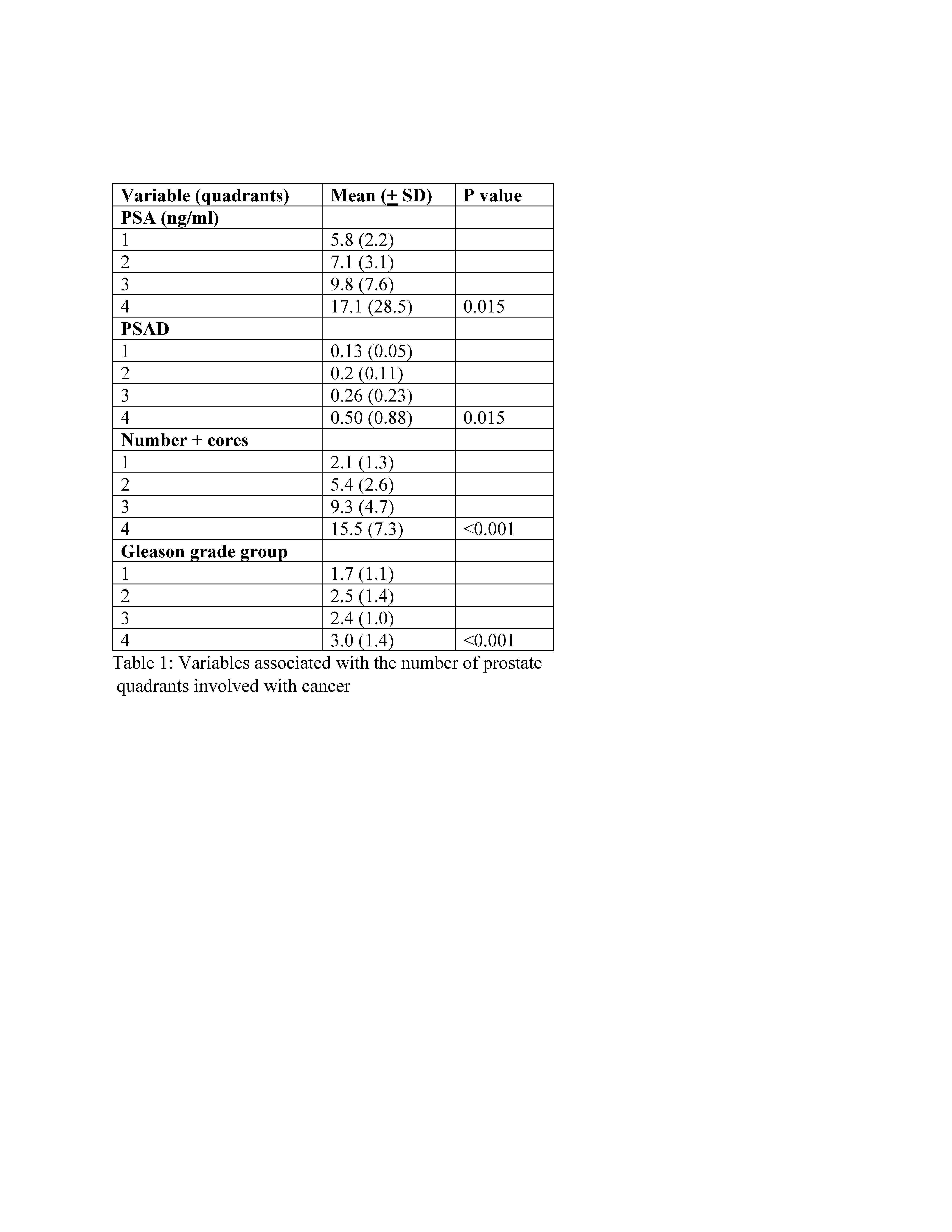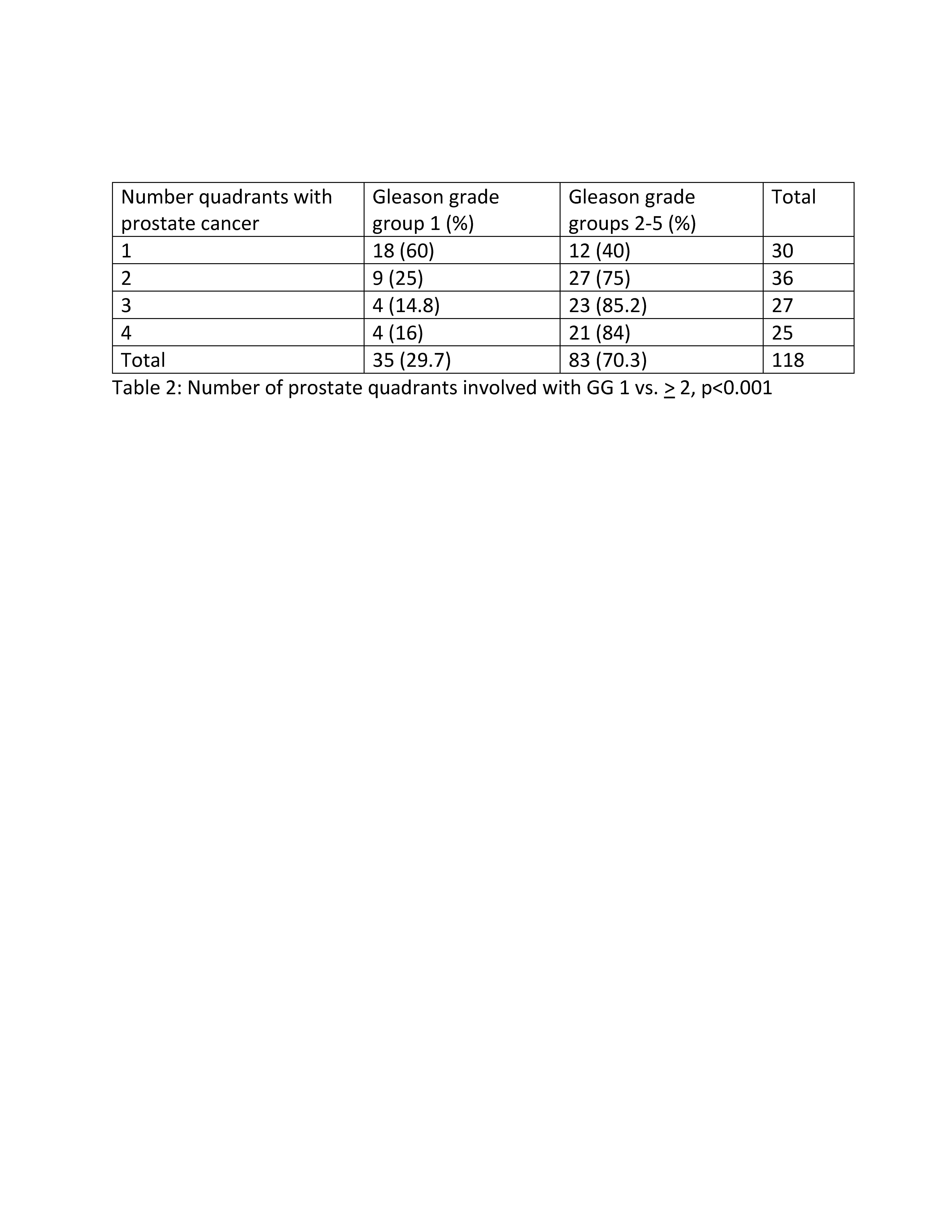Back
Poster, Podium & Video Sessions
Moderated Poster
MP09: Prostate Cancer: Detection & Screening I
MP09-12: Partial prostate gland ablation: lesion location using transperineal mapping biopsy (TPMB)
Friday, May 13, 2022
10:30 AM – 11:45 AM
Location: Room 222
Nelson Stone*, New York, NY, Vassilios Skouteris, Athens, Greece

Nelson N. Stone, MD
Professor of Urology and Radiation Oncology
Icahn School of Medicine at Mount Sinai
Poster Presenter(s)
Introduction: Focal therapy is popular, but clinicians are reluctant to rely on the mpMRI to target regions of interest (ROI) for biopsy and ablation. mpMRI identifies clinically significant prostate cancer (csPCa) but fails to find contralateral lesions in more than 30% (Stone N et al. Transperineal prostate biopsy identifies locations of clinically significant prostate cancer in men considering focal therapy with PI-RADS 3–5 regions of interest. BJUI Compass. 2021;1–7). We investigated a method to identify which quadrants of the prostate could be spared treatment utilizing TPMB.
Methods: 118 men were identified with prostate cancer (PC) following TPMB. The prostate was divided into 4 quadrants with the urethra at the mid prostate as the axis. Biopsies were taken at 5 mm spacing through a perineal template. csPCa was defined as Gleason grade group (GG) > 2. Multiple variables were compared using ANOVA and chi-square methods with significance defined as p <0.05.
Results: Mean age, PSA, PSAD, prostate volume, number of specimens and cores with PC were 69.4 years, 9.5 ng/ml, 0.26, 42.3 cc, 46.5 and 7.6. 30 (25.4%) men had 1 quadrant, 36 (30.5%) 2 quadrants, 27 (22.9%) 3 quadrants and 25 (21.2%) all 4 with PC. Men with > 1 quadrants had higher PSA, PSAD, number of positive cores and GG (table 1). 83/118 (70.3%) had csPCa. GG1 was more often present when only 1 quadrant had PC (table 2). PC limited to the anterior of the gland was more likely to be low grade (53.3 vs. 26.2%, p=0.032). While there was no difference in age, PSA and PSAD between anterior and posterior cancers, the former had fewer cores involved (3.9 vs. 8.2, p=0.017).
Conclusions: In the 83 men identified with csPCA, 62 (74.6%) had 3 or fewer quadrants involved with prostate cancer. 50 (60%) had 1or 2 quadrants suggesting most men with csPCa could be candidates for partial gland ablation. These patients tend to have lower PSA and PSAD. Treatment of 1 or two prostate quadrants may be a more optimal means of partial gland ablation compared to targeting limited to the ROI from a mpMRI.
Source of Funding: none


Methods: 118 men were identified with prostate cancer (PC) following TPMB. The prostate was divided into 4 quadrants with the urethra at the mid prostate as the axis. Biopsies were taken at 5 mm spacing through a perineal template. csPCa was defined as Gleason grade group (GG) > 2. Multiple variables were compared using ANOVA and chi-square methods with significance defined as p <0.05.
Results: Mean age, PSA, PSAD, prostate volume, number of specimens and cores with PC were 69.4 years, 9.5 ng/ml, 0.26, 42.3 cc, 46.5 and 7.6. 30 (25.4%) men had 1 quadrant, 36 (30.5%) 2 quadrants, 27 (22.9%) 3 quadrants and 25 (21.2%) all 4 with PC. Men with > 1 quadrants had higher PSA, PSAD, number of positive cores and GG (table 1). 83/118 (70.3%) had csPCa. GG1 was more often present when only 1 quadrant had PC (table 2). PC limited to the anterior of the gland was more likely to be low grade (53.3 vs. 26.2%, p=0.032). While there was no difference in age, PSA and PSAD between anterior and posterior cancers, the former had fewer cores involved (3.9 vs. 8.2, p=0.017).
Conclusions: In the 83 men identified with csPCA, 62 (74.6%) had 3 or fewer quadrants involved with prostate cancer. 50 (60%) had 1or 2 quadrants suggesting most men with csPCa could be candidates for partial gland ablation. These patients tend to have lower PSA and PSAD. Treatment of 1 or two prostate quadrants may be a more optimal means of partial gland ablation compared to targeting limited to the ROI from a mpMRI.
Source of Funding: none



.jpg)
.jpg)